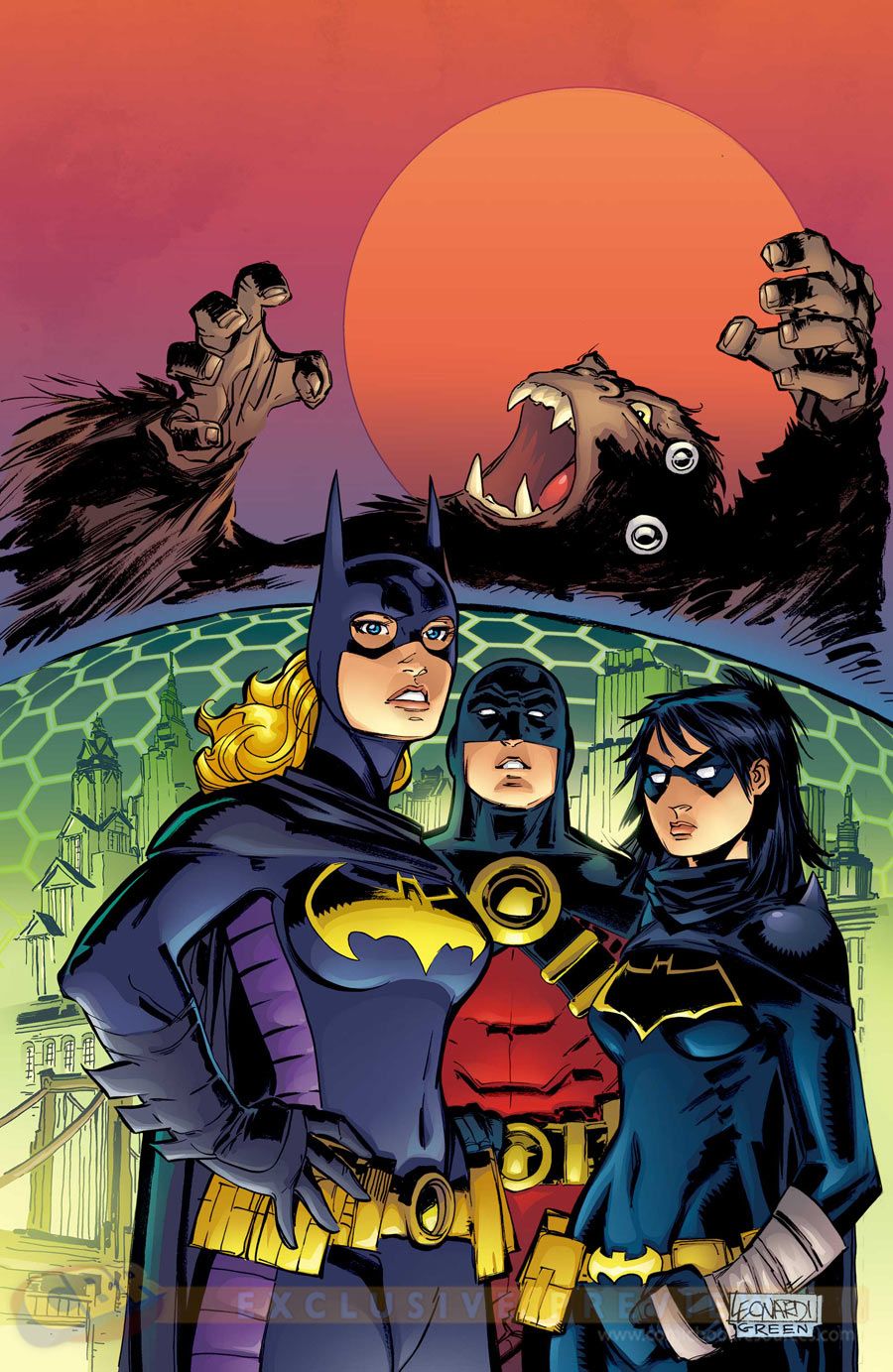"Convergence: Batgirl" #1 by Alisa Kwitney, Rick Leonardi and Mark Pennington marks the return of both Cassandra Cain and Stephanie Brown as Batgirls and also features Red Robin. Triple-billing aside, the story is really about Stephanie, who is the first-person narrator.
The choice to anchor the story to one character is smart, considering the arena-like chaos of "Convergence" and the large cast. On the first page, it's not immediately clear from the script or the artwork which character's head the reader is in, unless you count the color of the textboxes as a sufficient clue. For readers who are picking up "Convergence: Batgirl" #1because of the event and don't have a lot of pre-"Flashpoint" knowledge, that's a huge problem in terms of storytelling clarity. This muddled effect doesn't stop after the first page.
Stephanie is attacked by Catman when she needs to pee. This is meant to be funny, but it ends up just being embarrassing and lacking suspense. I was more worried that Stephanie wouldn't get her belt back on than concerned for her life. The humor fails and thus derails and slows down the opening action for no good reason, except to show that Stephanie's relatable.
While Stephanie remains her usual sympathetic self, her role as an anchor in the story is shaky because the words and pictures don't fit together well. The textbox voiceovers are out of sync with Leonardi's visual pacing. Also, Stephanie's thoughts have a coherent flow, but the dialogue feels either awkward or forced no matter who is talking. Leonardi's backgrounds are excellent, but his human figures and facial expressions are weaker. Buccellato's colors are bland for the desert scene, but the nighttime scenes look great. He plays up contrasting nighttime illuminations, pairing yellow incandescence with neon fluorescence.
This doesn't help with the action, which is jerky and disorienting. Kwitney and Leonardi don't do a good job of guiding and cluing in the reader in during the transitions, especially for segues into flashbacks. The reading experience never feels smooth or assured, because any immersion into the story is tempered by the need to get one's bearings.
Leonardi's linework and attention to detail really shine in the double-paged spread with four smaller panels on the bottom. Pennington wisely preserves a lot of the details with his inks, and Buccellato's colors are also particularly good in this panel. The animals and the foliage look splendid. The whole art team seems really into this panel. Unfortunately, the layout as a whole is cluttered and unnecessarily complicated. The diminishing size of the panels is meant to echo Stephanie's own self-diminishment of her self-regard, which is a cool idea in theory, but the execution just makes the whole spread look fragmented, especially after trying to follow the textboxes around. Also, while the appearance of all the animals looks cool, their inclusion feels like a spectacle and another tangent in an already jumpy narrative flow. It's the same with the hippos later on.
The next scenes, a birth and a bizarre confrontation between Cassandra and Stephanie, come out of nowhere as well, and the tone shifts abruptly and weirdly, moving from tragedy to fourth-wall-breaking and then to a declaration of intent to eat cute rodents. I will admit to liking the bit about eating guinea pigs, but it comes out of nowhere, and this is a recurring feeling throughout the issue. The humor undermines the characterization, pathos and the action.
"Batgirl: Convergence" #1 is a conventional story about self-confidence and self-discovery told with an unconventional approach. Kwitney doesn't make it easy for the reader to follow her. She doesn't use any time-stamp indicators, nor does she leave cues or set up a frame that would foreshadow the structure. The offbeat humor clashes with earnest characterization. The forward momentum is poor and the story keeps going off the different directions in order to give the reader a sense of Stephanie's character and where's she's been. It does partially succeed in these goals, but the blurriness of tone and choppiness of action are barriers to entry.

